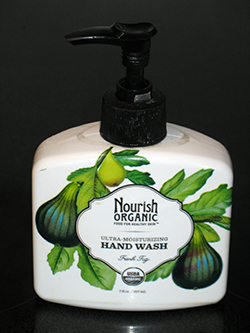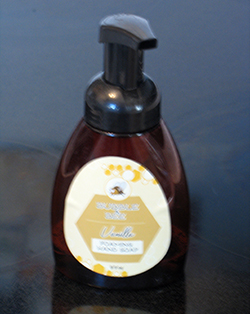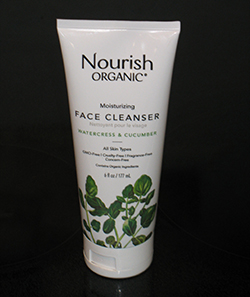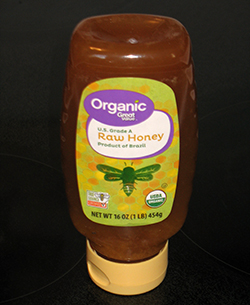 Six years ago, I found a soap that was gentle enough for my skin. It didn’t dry my skin. It didn’t irritate my skin. Nor was it formulated with questionable ingredients.
Six years ago, I found a soap that was gentle enough for my skin. It didn’t dry my skin. It didn’t irritate my skin. Nor was it formulated with questionable ingredients.
That soap was Nourish Organics Hand Wash.
I used it happily for five years. Sometimes it was hard to find. My local health food store stopped carrying it after a few months. Whole Foods stocked it for a while, but then stopped. Luckily Amazon carried the product, so I shopped for it there.
Then, in 2018, the price jumped. It had cost roughly $7 per 10-oz bottle. Now the price was $30. Yikes! That was certainly more than I could afford. Then it disappeared altogether. You couldn’t buy it for any amount of money.
I did some searching online. Was the company going out of business? No. Apparently Nourish Organic was changing its entire product line, aiming for “haut beauty” clientele. That’s not me. I just want a gentle cleanser that doesn’t dry or irritate my skin. And now the one I’d found (in my earlier search, laborious and protracted) was going away.
I was sad. And I dreaded the new search. But there wasn’t much else I could do. I needed a new cleanser, and when the extra bottle I had stashed ran out…
The new search was every bit as bad as I’d feared. All of the best products listed on the site maintained by the Environmental Working Group seemed to be those that were no longer made. The newer products had poor scores, even the so-called “environmentally friendly” ones.
 Finally, I settled on a foaming hand soap (vanilla flavor) from Bubble & Bee. At least it didn’t irritate my skin or cause an allergic reaction. And I felt confident that its ingredients were benign. But it did dry my skin, which I didn’t like at all.
Finally, I settled on a foaming hand soap (vanilla flavor) from Bubble & Bee. At least it didn’t irritate my skin or cause an allergic reaction. And I felt confident that its ingredients were benign. But it did dry my skin, which I didn’t like at all.
When my bottle of foaming hand soap began to near the bottom, I decided to look more closely at the new “haut beauty” array of products from Nourish Organic. Surely they would have a simple cleanser. Even the folks who went for anti-aging and extra-spcial “glow” and so on also needed to simply wash their bodies!
There must have been 30 or more products on the page I browsed. There were lotions, there were before-washing treatments, there were after-washing treatments, there were once-a-week treatments, there were eyelid ointments and lip ointments. I can’t even remember what else was featured—lots of specialty items that I didn’t want.
 But, eventually, I did locate two cleansers. One was specifically for aging skin. I checked its ingredients, and they included one that I knew was not good for me. The other option was the Moisterzing Face Cleanser with Watercress & Cucumber.
But, eventually, I did locate two cleansers. One was specifically for aging skin. I checked its ingredients, and they included one that I knew was not good for me. The other option was the Moisterzing Face Cleanser with Watercress & Cucumber.
I checked the ingredients.
Aloe vera juice, coconut oil, purified water, potassium hydroxide, sunflower seed oil, sesame seed oil, neem leaf oil, guar gum, cucumber extract, watercress extract, citric acid.
Wait a minute! That looked awfully familiar. Weren’t those the same ingredients that had been in the old hand wash?
I dug up an old bottle.
Aloe vera juice, coconut oil, purified water, sunflower seed oil, potassium hydroxide, sesame seed oil, guar gum, organic fragrance, shea butter, coconut milk, vitamin E, quinoa extract.
Okay. Not identical, but the first six ingredients were the same. No organic fragrance—probably a good thing. No shea butter, coconut milk, vitamin E, or quinoa extract, but those were at the end of the list, where the quantities are minute. Added were: cucumber extract, watercress extract, citric acid.
Still it seemed worth trying. It was more expensive than the old stuff, $8 for 6 oz instead of $7 for 10 oz, but if it worked! I ordered some.
And it did not work for me.
As before, it does not dry my skin, which is great. But, alas, it does irritate my skin. I would have to keep searching.
I tried using rhassoul clay, which works so wonderfully in my hair. It seems to work wonderfully on my skin also, but there is one problem. I always end up getting a tiny bit in one of my eyes. And, since I am not able to get the consistency perfectly smooth, the amount in my eye always includes some grit. I have not once managed to wash my face with rhassoul clay without getting grit in one eye. And the grit in my eye really hurts.
Additionally, because the clay is mixed with water, it does not keep. I don’t want to have to mix up fresh every time I want to wash my face.
 One day, while loading dishes into the dishwasher, I had an idea. What about honey? It has wound healing properties, doesn’t it? What about it?
One day, while loading dishes into the dishwasher, I had an idea. What about honey? It has wound healing properties, doesn’t it? What about it?
I did some digging around online, where I discovered there were a lot of people out there using honey to wash both their skin and their hair. They had a lot of good things to say about honey as a gentle cleanser.
Kale and Caramel told me that its acidic pH (between 3 and 4.5) make it very friendly to skin, which is acidic itself. Honey is a humectant, meaning that it draws moisture to your skin. Its wound healing properties cause it to be soothing to your skin. And it does not disrupt the acid mantle, which is the skin’s natural protective barrier.
Wellness Mama concurred on these benefits. Both sources agreed on the method: dampen your face with warm water, squeeze a half teaspoon of honey onto your fingertips, and rub the honey all over your face like you would soap.
Both sources also insist that raw honey must be used. If it has been heated, some (or all?) of its beneficial properties are absent.
I got some raw, organic honey and tried it. It worked beautifully!
My face felt clean and soft, but not dry, and not irritated. Other body parts also responded well.
Moistening the skin first is key. If you apply the honey to dry skin, it will both feel sticky and be sticky. But if you apply it to moist skin, it feels like any gentle cleaner, smooth and creamy with a few specs of honey crystals mixed in. And it rinses off easily.
Another advantage of honey? It’s shelf stable, which means I can keep it on the counter next to the bathroom sink.
One thing to be aware of is that raw honey does crystallize. It’s part of how you can be sure you are really getting raw honey. (Standard honey production heats the honey to high temperatures, because it will go through the filters much more easily. All honey needs to be filtered to remove pieces of comb and other debris.)
The jar I purchased was crystallized at the opening, so I sat the unopened jar in warm water to dissolve the crystals and allow the honey to flow out through the squeeze top. Some crystals are still present as I wash, but they dissolve rapidly as I massage the honey in.
I haven’t yet tried honey as a shampoo, but when I do, I’ll tell you all about my experience. 😀
For more about safe and effective toiletries, see:
Hair Wash with Rhassoul Clay
Why Add a Lemon Rinse
Great Soap & Etcetera Quest
